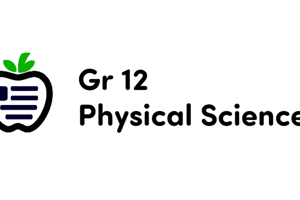Podcast
Questions and Answers
What is one reason why soils become depleted of nutrients?
What is one reason why soils become depleted of nutrients?
- Crop removal (correct)
- Soil texture improvement
- Increased microbial activity
- Application of organic matter
Which method is NOT mentioned as a way to determine fertilizer needs?
Which method is NOT mentioned as a way to determine fertilizer needs?
- Greenhouse tests
- Field fertilizer experiments
- Weather impact analysis (correct)
- Plant tissue analysis
Which property is essential for interpreting soil analysis results?
Which property is essential for interpreting soil analysis results?
- Bulk density
- Root penetration index
- Salt content
- Soil pH (correct)
What indicates the need for lime application in soil?
What indicates the need for lime application in soil?
Which of the following is typically a characteristic of organic fertilizers?
Which of the following is typically a characteristic of organic fertilizers?
What potential nutrient deficiency evaluation method involves observing the physical symptoms on plants?
What potential nutrient deficiency evaluation method involves observing the physical symptoms on plants?
What form of nutrient is generally lost through leaching in soils?
What form of nutrient is generally lost through leaching in soils?
What process involves the trapping of nutrients by clay particles in the soil?
What process involves the trapping of nutrients by clay particles in the soil?
What percentage of nitrogen is typically assumed to be in soil organic matter (SOM)?
What percentage of nitrogen is typically assumed to be in soil organic matter (SOM)?
Which method is typically NOT used for determining phosphorus levels in soil?
Which method is typically NOT used for determining phosphorus levels in soil?
What component is NOT essential for good soil testing?
What component is NOT essential for good soil testing?
How is lime requirement for acidic soils typically analyzed?
How is lime requirement for acidic soils typically analyzed?
Which of the following best describes the method for estimating nitrogen supply in soil?
Which of the following best describes the method for estimating nitrogen supply in soil?
In determining potassium content, which extractant might be used?
In determining potassium content, which extractant might be used?
What characteristic is NOT typically used to delineate areas for soil sample collection?
What characteristic is NOT typically used to delineate areas for soil sample collection?
Which of the following is true about nutrient sufficiency values derived from soil tests?
Which of the following is true about nutrient sufficiency values derived from soil tests?
How much nitrogen (N) is provided by applying 50 kg of a complete fertilizer with a ratio of 14-14-14?
How much nitrogen (N) is provided by applying 50 kg of a complete fertilizer with a ratio of 14-14-14?
What is the main advantage of banding phosphorus (P) fertilizers compared to broadcasting them?
What is the main advantage of banding phosphorus (P) fertilizers compared to broadcasting them?
What type of fertilizer application involves spreading fertilizer evenly across the soil surface?
What type of fertilizer application involves spreading fertilizer evenly across the soil surface?
When using a bag of 50 kg fertilizer with a composition of 18-46-0, how much phosphorus pentoxide (P2O5) is applied?
When using a bag of 50 kg fertilizer with a composition of 18-46-0, how much phosphorus pentoxide (P2O5) is applied?
Which method of fertilizer application involves adding fertilizer to the surface of an already growing crop?
Which method of fertilizer application involves adding fertilizer to the surface of an already growing crop?
Which of the following is a common characteristic of nitrogen (N) fertilizers?
Which of the following is a common characteristic of nitrogen (N) fertilizers?
What is the impact of using more phosphorus (P) and potassium (K) during broadcasting compared to banding?
What is the impact of using more phosphorus (P) and potassium (K) during broadcasting compared to banding?
What is a disadvantage of side dressing with anhydrous ammonia?
What is a disadvantage of side dressing with anhydrous ammonia?
Flashcards
Soil Fertility Status
Soil Fertility Status
The amount of available nutrients in soil that plants can use.
Soil Nutrient Depletion
Soil Nutrient Depletion
Loss of nutrients in soil due to factors like crop removal, leaching, and erosion.
Fertilizer Application
Fertilizer Application
Adding fertilizers to supplement the soil's nutrient supply for better crop growth.
Soil Analysis
Soil Analysis
Signup and view all the flashcards
Soil pH
Soil pH
Signup and view all the flashcards
Available Nutrients
Available Nutrients
Signup and view all the flashcards
Nutrient Fixation
Nutrient Fixation
Signup and view all the flashcards
Determining Fertilizer Needs
Determining Fertilizer Needs
Signup and view all the flashcards
PNIF
PNIF
Signup and view all the flashcards
Fertilizer Weight Calculation
Fertilizer Weight Calculation
Signup and view all the flashcards
Band Placement
Band Placement
Signup and view all the flashcards
Broadcast Application
Broadcast Application
Signup and view all the flashcards
Top Dressing
Top Dressing
Signup and view all the flashcards
Side Dressing
Side Dressing
Signup and view all the flashcards
Why Banding P Fertilizer is Important
Why Banding P Fertilizer is Important
Signup and view all the flashcards
Fertilizer Application Methods
Fertilizer Application Methods
Signup and view all the flashcards
OM Content & N Supply
OM Content & N Supply
Signup and view all the flashcards
Estimating N Supply
Estimating N Supply
Signup and view all the flashcards
N Supply per Hectare
N Supply per Hectare
Signup and view all the flashcards
Phosphorus (P) Determination
Phosphorus (P) Determination
Signup and view all the flashcards
Potassium (K) Analysis
Potassium (K) Analysis
Signup and view all the flashcards
Lime Requirement
Lime Requirement
Signup and view all the flashcards
Soil Test Interpretation
Soil Test Interpretation
Signup and view all the flashcards
Components of Good Soil Testing
Components of Good Soil Testing
Signup and view all the flashcards
Study Notes
Soil Fertility Management
- Nearly 75% of farmers in 2013 reported spending 10 hours or more a day on farm work.
- A bushel of wheat makes about 42 pounds of pasta or 210 servings of spaghetti. One bushel is equivalent to 35.24 kilograms.
- Bananas are a low-acidic fruit. They help coat the esophageal lining and fend off indigestion.
- The available nutrient supply in most soils is often not enough to meet crop needs.
- Soil depletion happens due to crop removal, leaching, volatilization (especially nitrogen), topsoil erosion, fixation by clays, and immobilization.
- Fertilizers are necessary to supplement soil nutrients.
Determining Fertility Status and Fertilizer Needs
- The type and amount of fertilizer are determined by soil analysis, field fertilizer experiments, plant tissue analysis, greenhouse tests, and analyzing nutrient deficiency symptoms.
- Fertilizer recommendations are often determined through a combination of above-mentioned approaches, crop type, soil properties, and environmental conditions.
Soil Analysis and Fertilizer Recommendation
- Soil analysis is a reasonably fast method for determining crop fertilizer necessities.
- The method involves:
- Correctly collecting soil samples.
- Subjected the sample to chemical analysis.
- Interpreting analysis results.
- Chemical extractants are used in soil tests to remove the potentially available form of nutrients from the soil.
- The available nutrients are quickly absorbed and replenished by the reserve nutrients so that the level at the time of the analysis is maintained.
- A simple soil fertility test determines pH content, OM content, available P, and exchangeable K, and lime requirements (if pH < 5.0).
- Soil pH is crucial for interpreting soil analysis results and predicting nutritional issues.
- OM content allows for estimating the N supply (assuming 5% N in SOM).
- If OM is 3%, the total organic N is approximately 0.15%.
- Phosphorus is determined using Bray 2, Olsen, and Truog methods, depending on the predominant P forms present in the soil as the extracting methods differ.
- Potassium is determined by ammonium acetate and sulfuric acid, taking method differences into account.
- Lime requirement for acidic soils is determined by incubating soil samples with increasing lime amounts(e.g., CaCO3) and plotting the pH change with lime increments. The required lime amount to reach a desired pH level is found from the plotted curve.
Soil Analysis Methodology
- Soil test results are compared with known deficiency/sufficiency values that are generated from previously calibrated data via correlations between soil tests and fertilizer experiments.
- Good soil testing requires a good representative sample, adequate lab tests to calculate the amount of nutrients the plant can remove from soil, and experimental work that correlates the soil test results with fertilizer recommendations and crop yields.
How Soil Samples are Collected
- The farm area for soil fertility assessment is initially mapped to divide similar areas based on visible soil properties and management.
- Homogeneous areas are labeled as sampling units.
- Soil texture, color, topography, previous cropping and management practices, and position in the landscape are some similarities of sampling units.
- Samples are randomly taken from the sampling area – using shovels or augers.
- The hole depth depends on whether the plants are shallow or deep rooted.
- Samples from several holes are mixed in a container, which forms the composite sample (approximately 1 kg). This composite sample represents a large area of soil from thousands of kg to ensure accurate representation.
How Field Fertilizer Experiments are Used
- A simple fertilizer experiment is designed to determine the optimal fertilizer amount for a certain crop.
- The experiment involves treatment plots starting from zero and gradually increasing the fertilizer at a certain interval.
- The plot size is around 20 m², and the treatments are replicated at least three times to reduce error.
- Agronomy data (e.g., for corn: stand count, plant height, yield) are collected, and results are plotted against the increasing N amounts.
- The experiment is repeated the next season and can be simultaneously conducted in various locations.
- This method provides a reliable basis for determining fertilizer recommendations, as it tests plants grown under natural environmental conditions.
- An example of a field experiment could include: Treatment 1 (0 kg N/ha), Treatment 2 (30 kg N/ha), Treatment 3 (60 kg N/ha), Treatment 4 (90 kg N/ha), and Treatment 5 (120 kg N/ha).
Greenhouse Experiments in Soil Fertility Evaluation
- Greenhouse studies are mainly to find preliminary approaches for identifying nutrient deficiencies in specific soils.
- They cannot be the sole basis for fertilizer recommendations.
- Pot experiments are limited by the size of the pot for the volume of soil explored by plant roots.
- Pot experiments are advantageous for simultaneously testing various types of soils, and they are inexpensive to establish and maintain.
Plant Analysis in Soil Fertility Evaluation
- Plant analysis is performed to find out what nutrient is lacking in the soil.
- Plant analysis can also be used to estimate the subsequent nutrient needs for long-duration crops such as sugarcane, bananas, and fruit trees.
Problems with Tissue Testing
- Nutrient stress may occur before applying fertilizer.
- It may be difficult to determine the correct amount of fertilizer to apply.
- Weather can affect tissue testing results.
Nutrient Deficiency Symptoms in Soil Fertility Evaluation
- Visual deficiency symptoms are useful for aiding in identifying nutrient deficiencies in plants.
- They are often complemented by plant or soil analysis.
- Visual deficiency symptoms can be difficult to interpret as they could resemble diseases or insect damage.
- Deficiency symptoms are often noticed too late to add the required fertilizer for improved crop growth.
Other Factors Considered in Fertilizer Recommendations
- Climate conditions (seasonal variations, amount of solar energy) affect fertilizer demands.
- Crop types require different levels of nutrients (e.g., N for grain crops, P for legumes, and K for sugar, fiber, tubers, and oil crops).
- Crops grown in the dry season generally require higher nutrient amounts compared to crops grown in the wet season owing to higher solar energy availability, more vigorous plant metabolism, and greater demand from plants for more available nutrient content.
- High-value crops justify high fertilizer rates due to high return values.
- For low-value crops, the return value from high fertilizer rates may not offset the cost.
- High-yielding crops and intensive management practices may require higher fertilizer rates.
- The sufficiency level of a nutrient for one crop may not be the sufficiency level for another crop.
- Soil pH affects nutrient behavior and availability; acidic soils have greater P fixation capacity. P fertilizer applications must account for the proportion that will be immobilized in the soil.
Fertilizers
- A fertilizer is any organic or inorganic material containing one or more essential nutrients for plant growth.
- Organic fertilizers are derived from plants or animals.
- Inorganic fertilizers are synthesized or processed from mineral deposits (commonly called chemical fertilizers).
- Fertilizers can be solid, liquid, or gaseous.
- Examples of organic fertilizers include animal manures, compost, crop residues, and green manures.
- Inorganic fertilizers include one or more combinations of the primary elements N, P, and K.
- Single-element fertilizers contain only one of these elements.
- Double-element fertilizers contain two of the elements N, P, and K.
- Complete fertilizers contain all three elements N, P, and K.
Fertilizer Grade
- The numbers on a fertilizer bag (e.g., 14-14-14) indicate the guaranteed percentage of N, P2O5, and K2O, respectively.
- The chemical analysis for P and K is often expressed in oxide form.
- The elemental analysis for 14-14-14 is 14-6.2-11.6. Conversion formulas are provided for converting oxide form to elemental form for P and K.
General Characteristics of Inorganic Fertilizers
- Different inorganic fertilizers (e.g. ammonium sulfate, urea, anhydrous ammonia) exist and are described by percentages of their constituent elements.
- Specific examples of composition are detailed for varying nutrients.
Fertilizer Computations
- The weight of fertilizer needed is calculated using the recommended rate and percent nutrient content of the fertilizer.
Sample Problems
- Sample questions and answer illustrations are provided for various fertilizer application situations.
Fertilizer Application
- Band placement is done in various ways (e.g., below seed level, on seed side). Roots grow through the fertilizer after germination. P-fertilizer immobility is reduced by banding. Broadcast application is even application across the soil surface frequently done after harvest.
- Top dressing refers to applying fertilizer to the surface of a growing crop.
- Side dressing is often done using anhydrous ammonia and is injected into the soil at least 3 inches deep to ensure efficient utilization by crops.
- Foliar application of fertilizers is made when quick nutrient action is desired or micronutrients are required, and soil applications are needed for large amounts. Micronutrients such as iron/zinc are generally applied in foliar sprays.
Studying That Suits You
Use AI to generate personalized quizzes and flashcards to suit your learning preferences.




